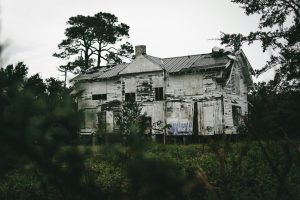Quality Control and Inspections
Ensuring the quality of construction is vital to building a safe, durable, and efficient home. Quality control and regular inspections play a crucial role in catching potential issues early and ensuring that all work meets the required standards.

Importance of Regular Inspections
Throughout the construction process, regular inspections are essential to maintain high standards and prevent costly mistakes. Inspections should be conducted at various stages, including after the foundation is laid, after framing is complete, and following the installation of critical systems such as plumbing, electrical, and HVAC. These inspections help ensure that each phase of construction adheres to local building codes and regulations, and that the workmanship meets the project’s specifications. Regular inspections also provide an opportunity to address any discrepancies or defects before they become larger problems, thus keeping the project on schedule and within budget.
Common Issues and How to Address Them
During construction, a few common issues may arise that require attention:
- Foundation Problems: Cracks or uneven settling in the foundation can lead to structural issues. Early detection through inspection allows for prompt repairs, such as filling cracks or reinforcing the foundation.
- Framing Errors: Misaligned walls or improperly installed roof trusses can compromise the structural integrity of the home. Inspectors will ensure that framing is square, level, and properly braced, and any deviations should be corrected immediately.
- Plumbing and Electrical Issues: Improper installation of plumbing or electrical systems can lead to leaks, shorts, or even fire hazards. Inspections verify that pipes are properly sealed and electrical wiring is up to code. Any issues should be rectified before walls are closed up with drywall.
- Insulation Gaps: Poorly installed insulation can lead to energy inefficiency and higher utility bills. Inspections should ensure that insulation is continuous and covers all necessary areas without gaps.
Addressing these issues promptly not only ensures the quality of the build but also prevents delays and additional costs.

Final Inspection Before Occupancy
The final inspection is the last major checkpoint before the home is ready for occupancy. This comprehensive inspection covers all aspects of the home, ensuring that everything from the foundation to the final finishes meets the necessary standards. The inspector will check that all systems (electrical, plumbing, HVAC) are fully operational and that all work has been completed according to the building plans and codes.
During this inspection, any remaining issues or deficiencies will be noted, and a punch list of items that need to be addressed before closing will be created. These might include minor cosmetic fixes, such as paint touch-ups, or more significant corrections, such as fixing a malfunctioning appliance.
Once the final inspection is successfully completed and all punch list items are resolved, the home will be deemed ready for occupancy. A certificate of occupancy will be issued, indicating that the home is safe and meets all legal requirements.
Conclusion
Building a home is a complex and rewarding journey that transforms an empty plot of land into a place of comfort and personal expression. The process begins with careful planning and budgeting, where you establish a clear vision for your home, secure financing, and select a suitable site. Following this, you engage in the design and layout phase, working with architects and builders to create plans that meet your needs and preferences while incorporating sustainable and energy-efficient features.
Once the design is finalized, the construction process begins, starting with site preparation and laying a solid foundation. The structure takes shape during the framing stage, followed by the installation of the roof, exterior elements, and essential systems like plumbing, electrical, and HVAC. As the interior of the home comes together, insulation, drywall, and finishes are added, bringing the design to life. Finally, landscaping and other exterior features complete the project, enhancing the home’s functionality and curb appeal.
Throughout the construction, quality control and inspections are critical to ensure that the work meets all safety and building standards. Regular inspections catch potential issues early, and a thorough final inspection ensures the home is ready for occupancy.
The success of a home-building project hinges on careful planning and execution. Every decision, from selecting a contractor to choosing materials, impacts the final outcome. Detailed planning helps you stay on budget, avoid delays, and minimize surprises during construction. Execution, on the other hand, involves coordinating various professionals, adhering to schedules, and maintaining high-quality workmanship throughout the process. By giving due attention to both planning and execution, you can ensure that your new home is built to the highest standards, providing comfort and value for years to come.
For future homeowners, the key to a successful home-building experience is patience and flexibility. Building a home is a significant investment of time and resources, and while challenges may arise, staying focused on your long-term vision is crucial. Work closely with your contractor and maintain open communication to ensure that your expectations are met. Don’t hesitate to ask questions or seek clarification at any stage of the process.
Additionally, be proactive in learning about the construction process and the decisions being made. This knowledge will empower you to make informed choices that align with your goals and budget. Finally, consider the future—plan for your home to accommodate potential changes in your lifestyle, such as family growth or aging-in-place needs.
By approaching the home-building process with thorough preparation, clear communication, and a willingness to adapt, you can turn your dream home into a reality.


 Facebook
Facebook
 X
X
 Pinterest
Pinterest
 Copy Link
Copy Link

